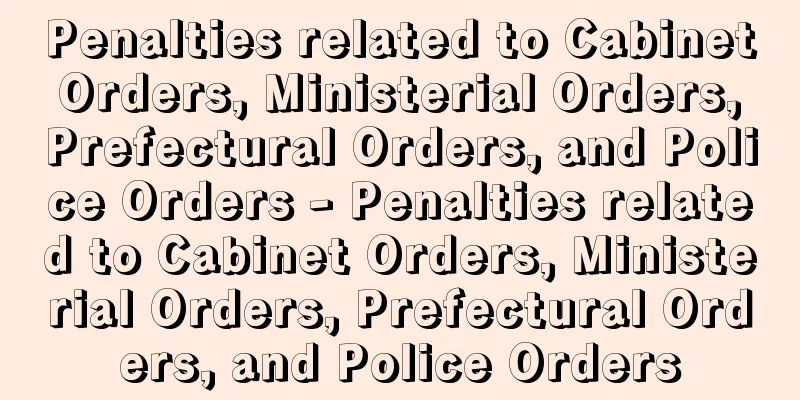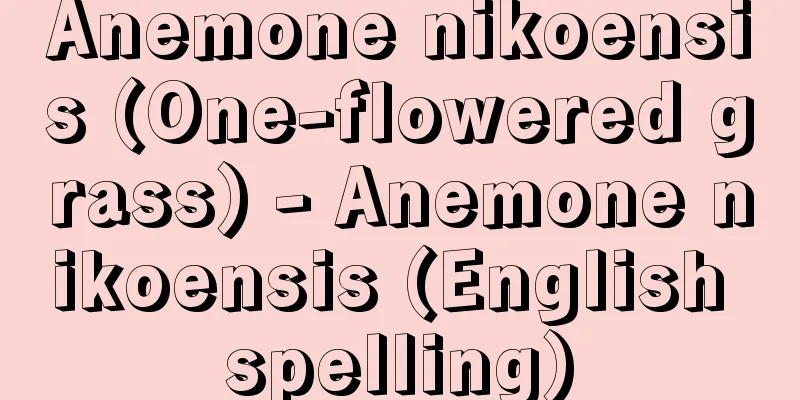Penalties related to Cabinet Orders, Ministerial Orders, Prefectural Orders, and Police Orders - Penalties related to Cabinet Orders, Ministerial Orders, Prefectural Orders, and Police Orders

|
… *Some of the terminology used in the "Penalties Related to Cabinet Orders, Ministerial Ordinances, Prefectural Ordinances, and Police Ordinances" is listed below. Source | Heibonsha World Encyclopedia 2nd Edition | Information |
|
… ※「閣令省令庁府県令及警察令ニ関スル罰則」について言及している用語解説の一部を掲載しています。 出典|株式会社平凡社世界大百科事典 第2版について | 情報 |
<<: School age maturity - school age maturity
>>: Tsururei [Hot Spring] - Kakurei
Recommend
Bathurst
Former name of Banjul, the capital of Gambia, name...
Barbaroi (Greek: barbaroi)
A term used by the ancient Greeks (Hellenes) to r...
AID (Artificial Insemination)
…Depending on the semen used, it is divided into ...
Sanetaka's Chronicle
The diary of Sanjonishi Sanetaka, Minister of the...
Sansei
Taoist heavens. Yuqing Heaven, where Yuanshi Heave...
Sharpeville Incident - Sharpeville Incident
A white police officer indiscriminately shot Afric...
Mount Kyowa - Mount Kyowa
...It consists of two volcanic bodies: Higashi-Ch...
Hiroaki Collection - Gumyoushu
A collection of Buddhist treatises from the Liang...
Uniformitarianism
A theory or view of nature that holds that the va...
Kappeta weaving - Kappeta weaving
A weaving technique handed down on Hachijo Island ...
Ceramic filter
1. A filter made of porous fine ceramics. It has e...
Eight people performing arts
A type of entertainment at a vaudeville hall. It ...
Eather, W.
...The premise of most of these theories is that ...
Growth hormone
It is a simple protein hormone secreted from the ...
Chloride cracking - Chloride cracking
...Pressurized water reactors use a nickel alloy ...









